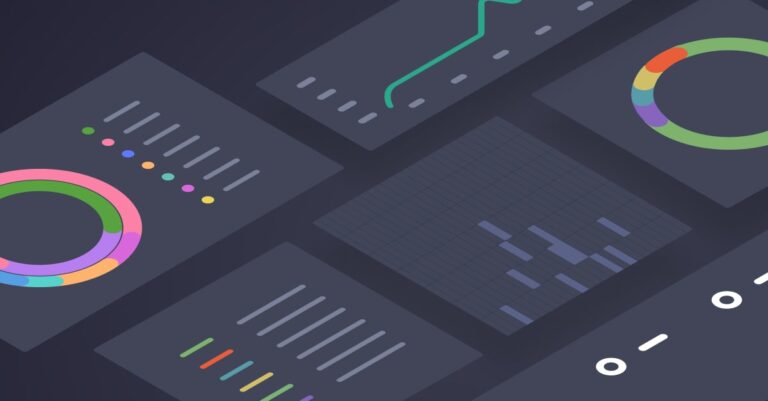
Logz.io Now Supports the OSS Grafana API
November 1, 2020

Logz.io has a comprehensive API that allows you to send and query logs or metrics easily. Now, that process is getting even easier for infrastructure monitoring. Logz.io has added support for the open source grafana API. In other words, you can use the OSS grafana’s integration within Logz.io.
More on the subject:
The open source grafana API is composed of many supported HTTP APIs that the frontend of OSS grafana uses to manage dashboards and dashboard versions, alerts, send snapshots, manage folders and make annotations. The way we at Logz.io connect to that integration is by attaching the Logz.io API Gateway to one the six supported grafana HTTP API endpoints:
- Alerting
- Annotations
- Dashboard
- Dashboard versions
- Folder/dashboard search
- Snapshot
Simply call the API with a GET request after authenticating your Logz.io X-API-TOKEN:
GET /v1/grafana/api/{GRAFANA_API_URL}
Before you do anything else, you’ll need to create your X-API-TOKEN (or your key) to ship into your Logz.io account.
On your Logz.io Operations dashboard, make sure you are on the Metrics UI. Then hit the cog for Settings (⚙). Go to Tools, then Manage Tokens.

On the MANAGE TOKENS page, select the third option on the menu below the title which reads __API tokens__. Then select + New API Token. To use the API in Logz.io, you’ll need this token.
From there, place it in your API request. On OSS grafana, this is usually written as Authorization bearer <<token>>.
Examples
The following offer some examples of things you can do with the grafana API in the Logz.io API Gateway. Included are the basic versions of requests, their cURL counterparts, and some longer examples.
Dashboard API
The Dashboard API can do many things. You can either update an existing dashboard or generate a new one. Additionally, you can retrieve or delete dashboards, get tags, or move to the home dashboard:
| Dashboard API | Request Format | cURL Example |
| Create Dashboard | POST /api/dashboards/db | curl POST http://api.logz.io/v1/api/dashboards/db |
| Get Dashboard by uid | GET /api/dashboards/uid/:uid | curl GET http://api.logz.io/v1/api/dashboards/uid/:uid |
| Delete dashboard by uid | DELETE /api/dashboards/uid/:uid | curl DELETE http://api.logz.io/v1/api/dashboards/uid/:uid |
| Home Dashboard | GET /api/dashboards/home | curl GET http://api.logz.io/v1/api/dashboards/home |
| Tags | GET /api/dashboards/tags HTTP/1.1 |
In order to create a dashboard, you’ll need to include your desired parameters for the dash itself. Define this in the body of the API.
Alerting API & Alerting Notifications API
Querying parameters for the Alerting API include: dashboardTag, dashboardQuery, panelId, dashboardId, query, folderId, limit, and state(ALL, ok, paused, alerting, pending, no_data).
| Alerting API | Request Format | cURL Example |
| Get alert by id | GET /api/alerts/:id | curl GET http://api.logz.io/v1/api/alerts/id |
| Pause alert by id | POST /api/alerts/:id/pause | curl POST http://api.logz.io/v1/api/alerts/id/pause |
| Get list of alerts | GET /api/alert-notifications | curl GET http://api.logz.io/v1/api/alert-notifications |
| Get list of alerts by id | GET /api/alert-notifications/lookup | curl GET http://api.logz.io/v1/api/alert-notifications/lookup |
| Fetch notification by uid | GET /api/alert-notifications/uid/:uid | curl GET http://api.logz.io/v1/api/alert-notifications/uid/:uid |
| Fetch notification by id | GET /api/alert-notifications/:id | curl GET http://api.logz.io/v1/api/alert-notifications/:id |
| Test an alert | GET /api/alert-notifications/test | curl GET http://api.logz.io/v1/api/alert-notifications/test |
POST 'https://api.logz.io/v1/grafana/api/dashboards/db' \
--header 'x-api-token: 9c4fdb5e-****-****-****-15c8d2637828'
Accept: application/json
Content-Type: application/json
Authorization: Bearer 50m3rand0mb3ar3rnum43r{
"uid": "new-alert-notification", //optional
"name": "new alert notification", //required
"type": "email", //required
}
}
Annotations
The Annotations API rolled out with the annotation feature itself. They are filtered by tag once you’ve saved and configured them, in one of the given relational databases: postgres, mysql, or sqlite.
This particular grafana API uses the following query parameters (all of which are optional); to and from (for date and time in milliseconds), tags (for annotations not restricted to a specific panel or dash), type, userId, panelId, dashboardId, alertId, and limit.
This particular grafana API uses the following query parameters (all of which are optional); to and from (for date and time in milliseconds), tags (for annotations not restricted to a specific panel or dash), dashboardTag, dashboardQuery, panelId, dashboardId, query, folderId, state, and limit.
| Annotations | Request Format | cURL Example |
| Create annotation | POST /api/annotations | curl GET http://api.logz.io/v1/api/annotations |
| Update annotation | PUT /api/annotations/:id | curl PUT http://api.logz.io/v1/api/annotations/:id |
| Path annotation | PATCH /api/annotations/:id | curl PATCH http://api.logz.io/v1/api/annotations/:id |
| Delete annotation | DELETE /api/annotations/:id | curl DELETE http://api.logz.io/v1/api/annotations/:id |
Examples:
Convert your dates to milliseconds and input your search limit. If you want to search for specific tags, you can search for multiple. Input the specific tag where it says <<tag_1>> and <<tag_2>>.
GET /api/annotations?from=1597743821000&to=1603014221000&tags=<<tag_1>>&tags=<<tag_2>>&limit=400
Folder/Dashboard Search API
This API lets you search through folders and/or dashboards using the following query parameters: query, page, tag, limit, type (as in dash-folder or dash-db), starred, and either folderIds or dashboardIds.
| Search API | Request Format | cURL Example |
| Get alert by id | GET /api/alerts/:id | curl GET http://api.logz.io/v1/api/alerts/:id |
| Pause alert by id | POST /api/alerts/:id/pause | curl POST http://api.logz.io/v1/api/alerts/:id/pause |
Snapshot API
Versions of the snapshot feature are available in most UI consoles for major DevOps tools. OSS grafana is no different — get a snapshot of a specific chart or dashboard straight out of your UI for reports or for sending.
| Snapshot API | Request Format | cURL Format |
| Create new snapshot | POST /api/snapshots | curl POST http://api.logz.io/v1/api//snapshots |
| Get a list of snapshots | GET /api/dashboard/snapshots | curl GET http://api.logz.io/v1/api/dashboard/snapshots |
delete Snapshot by deleteKey | GET /api/snapshots-delete/:deleteKey | curl GET http://api.logz.io/v1/api/snapshots-delete/:deleteKey |
| delete snapshot by key | DELETE /api/snapshots/:key | curl DELETE http://api.logz.io/v1/api/snapshots/:key |
| get snapshot by key | GET /api/snapshots/:key | curl GET http://api.logz.io/v1/api/snapshots/:key |
Conclusion
With this ability, it will be easier to call data within Logz.io Infrastructure Monitoring. For more information on Logz.io Infrastructure Monitoring, check out



